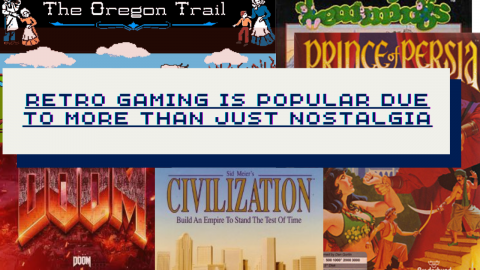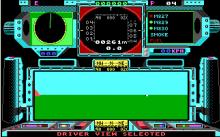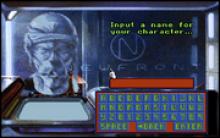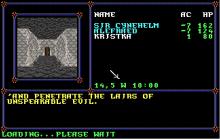Retro Gaming Is Popular Due To More Than Just Nostalgia

Introduction
In the ever-evolving landscape of video games, there’s a fascinating phenomenon: the enduring popularity of retro gaming. While nostalgia certainly plays a significant role, it’s essential to recognize that there are deeper reasons behind the resurgence of interest in classic games. Let’s explore why retro gaming continues to captivate both seasoned gamers and newcomers alike.
What Is Retro Gaming?
Before we delve into the intricacies, let’s establish what we mean by retro gaming. Essentially, it refers to playing and appreciating video games from previous decades. These games often evoke memories of arcade cabinets, pixelated graphics, and simpler gameplay mechanics. But retro gaming isn’t limited to a specific era; it encompasses titles from the '80s, '90s, and even early 2000s.
Different Types of Retro Games
Retro games come in various flavors, each with its unique charm:
- Arcade Classics: Think of iconic titles like Pac-Man, Space Invaders, and Donkey Kong. These games defined the arcade scene and left an indelible mark on gaming history.
- Console Gems: From the NES to the Sega Genesis, consoles introduced us to beloved franchises such as Super Mario, The Legend of Zelda, and Sonic the Hedgehog.
- PC Adventures: Early PC gaming had its share of classics, including text-based adventures, point-and-click quests, and early RPGs.
The Nostalgia Factor
Nostalgia acts as a powerful catalyst for retro gaming’s enduring appeal. Here’s why:
- Emotional Connection: Revisiting games from our youth transports us back to simpler times. The familiar soundtracks, pixelated graphics, and quirky characters evoke a sense of comfort and joy.
- Shared Memories: Retro games often spark conversations among friends and family. Remember the hours spent huddled around a CRT TV, competing in split-screen multiplayer? Those memories bind us together.
- Escape from Modern Complexity: In an era of complex open-world games and intricate narratives, retro titles offer straightforward gameplay. Sometimes, we crave the simplicity of jumping over barrels or collecting coins without overthinking.
Examples of Nostalgic Retro Games
- Super Mario Bros.: The plumber’s adventures remain timeless, whether you played them on the NES or discovered them through virtual consoles.
- Tetris: The addictive puzzle game transcends generations. Its falling blocks continue to captivate players worldwide.
- Street Fighter II: The arcade brawler that birthed the fighting game genre. Who can forget the iconic “Hadouken!”?
Beyond Nostalgia: Other Reasons for Popularity
While nostalgia is the beating heart of retro gaming, other factors contribute to its enduring popularity:
- Simplicity: Retro games often feature straightforward mechanics. They’re easy to pick up, making them accessible to players of all ages.
- Affordability: Unlike modern AAA titles, retro games don’t break the bank. Emulators, virtual consoles, and indie releases allow gamers to enjoy classics without emptying their wallets.
- Uniqueness: Retro games possess a distinct personality. Their limitations (due to hardware constraints) birthed creativity. Each pixel, each chiptune, tells a story.
Impact of Retro Gaming on Modern Gaming
As we journey through the pixelated landscapes of retro games, we discover that their influence extends far beyond nostalgia. Let’s explore how these classic gems have left an indelible mark on modern video games.
Influence of Retro Gaming Elements on Modern Video Games
- Game Mechanics and Design:
- Platformers: The precise jumps of Super Mario, the gravity-defying leaps of Sonic, and the challenging level design have inspired countless modern platformers.
- Puzzle Mechanics: Games like Tetris and Puyo Puyo laid the groundwork for puzzle games. Today, we see their influence in titles like Candy Crush and Portal.
- Roguelikes: The permadeath mechanic from early roguelikes has resurfaced in games like Spelunky and Dead Cells.
- Art Style and Aesthetics:
- Pixel Art: The resurgence of pixel art in indie games pays homage to retro aesthetics. Titles like Stardew Valley and Undertale evoke the charm of yesteryears.
- 8-Bit Soundtracks: Chiptunes, with their catchy melodies, have become a hallmark of indie games. Think of Shovel Knight or Celeste.
- Narrative Tropes:
- Metroidvania: The nonlinear exploration of Metroid and Castlevania has evolved into a genre of its own. Games like Hollow Knight and Axiom Verge thrive on this formula.
- Text Adventures: While not as prevalent, interactive fiction games continue to experiment with storytelling. They owe their roots to classics like Zork.
Case Studies of Modern Games Inspired by Retro Games
- “Hollow Knight”:
- This indie gem draws inspiration from the atmospheric exploration of Metroid and the challenging combat of Castlevania. Its hand-drawn art and haunting soundtrack pay homage to the classics.
- “Undertale”:
- A quirky RPG that subverts expectations, Undertale blends turn-based combat with morality choices. Its pixelated graphics and memorable characters evoke the spirit of retro RPGs.
- “Celeste”:
- A precision platformer that channels the difficulty of old-school games. Its heartfelt narrative and chiptune soundtrack create a harmonious blend of past and present.
The Retro Gaming Community
Beyond the games themselves lies a vibrant community of retro enthusiasts. Here’s a glimpse:
- Events: Retro gaming conventions, such as Classic Gaming Expo and Portland Retro Gaming Expo, bring fans together to celebrate their shared passion.
- Forums and Blogs: Online platforms like NintendoAge and RetroGamer foster discussions, game swaps, and preservation efforts.
- Social Aspects: Whether through Twitch streams, YouTube channels, or local meetups, retro gamers connect, share memories, and introduce new players to the classics.
Future of Retro Gaming
As technology evolves, so does our approach to retro gaming:
- Emulation and Preservation: Emulators allow us to experience classic games on modern hardware. Preservation efforts ensure that these digital time capsules remain accessible.
- Remakes and Remasters: Developers revisit beloved titles, enhancing graphics and gameplay. The Final Fantasy VII Remake and Crash Bandicoot N. Sane Trilogy exemplify this trend.
- Virtual Reality and Augmented Reality: Imagine stepping into a pixelated world through VR or overlaying retro elements onto our surroundings using AR glasses.
Conclusion
In this journey through the annals of gaming history, we’ve discovered that retro gaming isn’t merely a wistful glance backward. It’s a bridge connecting generations, a testament to creativity, and a reminder that sometimes, the simplest games hold the most profound magic.










